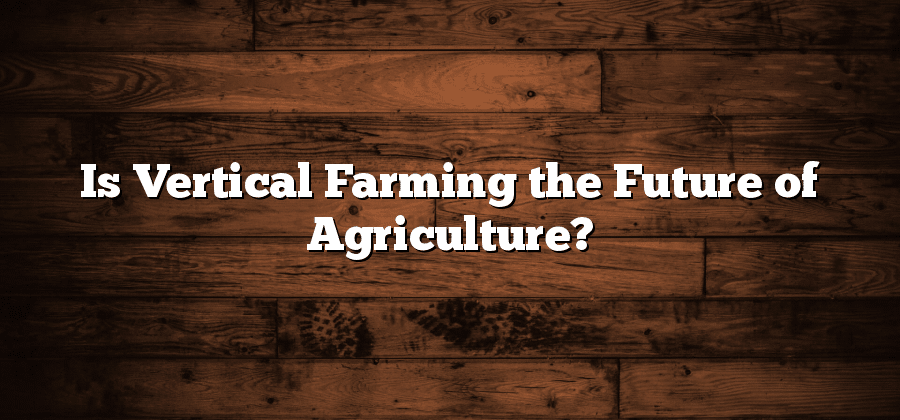Advantages of Vertical Farming over Traditional Methods
Vertical farming offers numerous advantages over traditional farming methods. Firstly, it allows for year-round crop production, independent of weather conditions and seasons. By employing advanced indoor farming techniques and technologies, vertical farms can create and maintain a controlled environment that optimizes plant growth. This means that farmers can produce high-quality and consistent yields throughout the year, ensuring a steady supply of fresh produce regardless of external factors.
Secondly, vertical farming provides significant space efficiency. With the utilization of vertical space, crops can be stacked on multiple levels within a controlled environment. This vertical arrangement maximizes the use of available space, making it possible to grow more crops in a smaller area compared to traditional farming. As a result, vertical farming allows for higher crop yields per square meter, which is particularly valuable in densely populated areas where land is limited. Additionally, the controlled environment and efficient use of resources in vertical farms contribute to reduced water usage and minimal pesticide and fertilizer requirements, making it an environmentally sustainable solution for food production.
Sustainable Solutions for Food Production
In recent years, there has been a growing concern over the sustainability of traditional methods for food production. As the world’s population continues to rise, it has become increasingly clear that more efficient and environmentally-friendly solutions are needed to ensure a stable food supply. Vertical farming has emerged as a promising alternative, offering numerous advantages over conventional agricultural practices.
One of the key advantages of vertical farming is its ability to maximize crop yield and space efficiency. Traditional farming methods often require large plots of land, which can be limited and expensive. In contrast, vertical farming utilizes vertical space, allowing for multiple levels of crops to be grown in a compact area. This not only increases the overall yield per square foot but also reduces the need for expansive farmland, making vertical farming a viable solution for urban environments where land is scarce. Additionally, vertical farming techniques, such as hydroponics and aeroponics, enable precise control over growing conditions, further optimizing crop production and minimizing the use of resources like water and fertilizers.
Maximizing Crop Yield and Space Efficiency
[Paragraph 1]
To address the ever-increasing demand for food in a rapidly growing population, it is crucial to find methods that can maximize crop yield while efficiently utilizing limited space. This is where vertical farming emerges as a promising solution. Unlike traditional methods, vertical farming allows for the cultivation of crops in vertical layers, enabling multiple stacked levels of growing spaces within a confined area.
[Paragraph 2]
One of the key advantages of vertical farming in terms of maximizing crop yield and space efficiency is its ability to optimize the use of available resources. By employing techniques like hydroponics and aeroponics, vertical farms can provide crops with precisely controlled nutrient solutions and water, minimizing waste and ensuring that plants receive the optimal conditions for growth. Additionally, the controlled indoor environment of vertical farms allows for year-round cultivation, eliminating the limitations of seasonal changes and providing a steady supply of fresh and high-quality produce. With this approach, vertical farming holds the potential to significantly increase crop yields compared to conventional agriculture practices while occupying a fraction of the land required.
Vertical Farming Techniques and Technologies
Vertical farming techniques and technologies have revolutionized the way food is cultivated and harvested. By utilizing vertical space, growers are able to maximize crop yield and space efficiency like never before. This innovative approach to farming allows for more efficient and productive use of urban areas, making it especially advantageous in densely populated areas where land is limited.
One of the key techniques used in vertical farming is hydroponics, a soilless method of growing plants that utilizes nutrient-rich water solutions. This technique allows for precise control over nutrient levels, pH balance, and water usage, resulting in healthier and faster-growing plants. In addition to hydroponics, aeroponics is another technique commonly employed in vertical farming. This method involves suspending plant roots in a nutrient-rich mist, allowing for even greater efficiency and faster growth rates.
These techniques are often combined with advanced technologies such as LED lighting systems, which provide the necessary light spectrum for optimal plant growth while minimizing energy consumption. Additionally, vertical farming often incorporates automation and data analytics to monitor and control various environmental factors like temperature, humidity, and airflow. This level of precision and efficiency can significantly reduce resource consumption and minimize waste, making vertical farming a sustainable solution for future food production.
Potential Impact on Environmental Conservation
Vertical farming has emerged as a sustainable solution for food production, with the potential to make a significant impact on environmental conservation. By utilizing vertical space within urban environments, this innovative farming method minimizes the need for vast expanses of land, which are often subject to deforestation and habitat destruction. By cultivating crops in multi-layered structures, vertical farming maximizes space efficiency, allowing for higher crop yields while reducing the ecological footprint associated with traditional agricultural practices.
Furthermore, vertical farming techniques and technologies offer the opportunity to reduce water usage and decrease reliance on harmful agrochemicals. In these controlled environments, precise management of water resources can be achieved through advanced irrigation systems and hydroponic or aeroponic techniques. These methods not only ensure optimal water efficiency by delivering precise amounts directly to the roots of plants, but also enable the recycling and reuse of water, minimizing wastage. Additionally, with the implementation of integrated pest management systems, vertical farming can significantly reduce the necessity for chemical pesticides, thus mitigating the negative impact on biodiversity and the environment.






